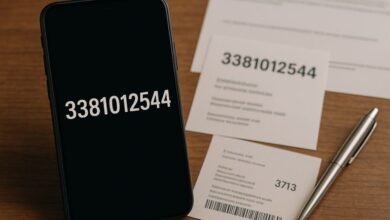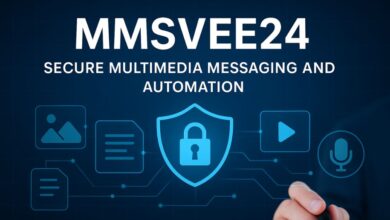Decoding 001-gdl1ghbstssxzv3os4rfaa-3687053746: Understanding Unique Identifiers”

In the vast and rapidly expanding digital universe, data is generated, exchanged, and stored at staggering rates. Every transaction, every login, every system process, and every object in a database needs a way to be uniquely recognized. This is where unique identifiers (UIDs) step in as unsung heroes of modern computing.
One such mysterious yet powerful string that has drawn attention is:
001-gdl1ghbstssxzv3os4rfaa-3687053746
At first glance, it looks like an indecipherable jumble of numbers and letters. But when examined closely, it reveals patterns and purposes that highlight the way digital systems manage complexity, maintain integrity, and ensure scalability. This article explores the structure, significance, applications, and cautions surrounding such identifiers — with particular emphasis on this specific string.
Breaking Down the String
The string 001-gdl1ghbstssxzv3os4rfaa-3687053746 can be dissected into three logical segments, each playing a potential role in defining its uniqueness and usability.
-
001(Prefix or Version Code)-
Often used as a namespace indicator, version number, or categorical prefix.
-
Suggests that this identifier may be part of a larger sequence where
002,003, etc., could exist. -
In distributed systems, prefixes help segment data into logical groups.
-
-
gdl1ghbstssxzv3os4rfaa(Randomized Alphanumeric Block)-
This appears as a high-entropy token, likely generated by cryptographic randomness or hashing.
-
Its purpose: ensure uniqueness across billions of entries.
-
Similar to UUIDs (Universally Unique Identifiers), this part reduces collisions and adds unpredictability.
-
-
3687053746(Numeric Suffix)-
Likely represents a timestamp (Unix epoch-like), incremental sequence, or checksum.
-
Embedding numeric markers aids in sorting, version tracking, or validating data integrity.
-
Together, these three layers form a composite UID — balancing readability, uniqueness, and functional metadata.
Why Unique Identifiers Matter
Unique identifiers like 001-gdl1ghbstssxzv3os4rfaa-3687053746 are not arbitrary. They serve critical functions across digital ecosystems:
-
Database Management
-
Every row in a database must be distinct. UIDs prevent duplication.
-
Relational databases rely on primary keys, while NoSQL systems often use long alphanumeric identifiers.
-
-
Scalability in Distributed Systems
-
In cloud environments, multiple servers may generate IDs simultaneously.
-
A strong UID system ensures no two servers generate the same ID — critical for scalability.
-
-
Security and Privacy
-
Randomized identifiers protect against resource enumeration attacks.
-
If user accounts were numbered sequentially, attackers could easily guess them. With UIDs, enumeration becomes infeasible.
-
-
SEO and Digital Tracking
-
While raw identifiers are not SEO-friendly, many websites append descriptive slugs to such UIDs.
-
Example:
product/001-gdl1ghbstssxzv3os4rfaa-3687053746-wireless-headphones
-
How Are Such Identifiers Generated?
There are several technical approaches to generating identifiers like this one:
1. Hash Functions
-
Algorithms like SHA-256 or MD5 convert input data (like user IDs, timestamps) into fixed-length alphanumeric strings.
-
Strength: Collisions are rare, making them reliable.
2. UUIDs (Universally Unique Identifiers)
-
Standardized 128-bit identifiers represented as alphanumeric strings.
-
Example:
550e8400-e29b-41d4-a716-446655440000. -
The middle portion of our string strongly resembles this logic.
3. Random Token Generators
-
Cryptographically secure pseudorandom number generators (CSPRNGs) produce highly random sequences.
-
Common in session tokens and API keys.
4. Composite IDs
-
Combine multiple elements: prefix + random token + numeric marker.
-
Offers a balance of structure and unpredictability — exactly like
001-gdl1ghbstssxzv3os4rfaa-3687053746.
Practical Applications of This Identifier
1. Web Applications and APIs
APIs often use identifiers like this for authentication, session tracking, or resource referencing. For example:
-
Session IDs: Each user session gets a UID to track activity securely.
-
Resource Endpoints: APIs may expose resources through UIDs rather than predictable sequential numbers.
2. Blockchain and FinTech
Some blog sources speculate that identifiers like this can be used in blockchain contexts:
-
Transaction hashes.
-
Smart contract addresses.
-
Immutable asset tracking.
3. Cloud and Big Data Systems
Identifiers in cloud services allow distributed systems to:
-
Avoid conflicts across servers.
-
Maintain log traceability.
-
Scale seamlessly while preserving uniqueness.
4. SEO-Optimized Content URLs
E-commerce and blogging platforms embed such identifiers in URLs to:
-
Guarantee uniqueness for millions of products or articles.
-
Pair them with human-readable keywords for SEO benefits.
Benefits of Structured UIDs
-
Collision Resistance
-
With randomization and numeric suffixes, two identical IDs almost never occur.
-
-
Data Integrity
-
Numeric components may double as checksums or timestamps to validate data.
-
-
Namespace Control
-
Prefixes like
001prevent misclassification when multiple categories are managed.
-
-
Future-Proofing
-
Extensible structure allows more versions or segments to be added without breaking compatibility.
-
SEO, Content Strategy, and Identifiers
While the identifier itself is not descriptive, its use alongside keywords can greatly improve search engine visibility. For example:
Instead of:
Use:
This technique is common across modern CMS platforms and helps merge machine efficiency with human readability.
Caution: When Identifiers Appear Suspicious
Not all appearances of identifiers like 001-gdl1ghbstssxzv3os4rfaa-3687053746 are benign. Some blogs caution users to be alert if such strings appear in:
-
Unexpected email attachments (could be malware or phishing markers).
-
Unfamiliar process logs (might hint at unauthorized system activity).
Best Practices:
-
Always scan files with unusual identifiers.
-
Verify the source before trusting attachments or URLs.
-
Understand the context: an ID in a known platform is safe; in an unsolicited message, it’s suspicious.
Case Study: Comparing with UUIDs and Hashes
-
UUIDs are globally recognized standards with fixed formatting.
-
Hashes are algorithmic outputs with fixed lengths (e.g., 32 or 64 characters).
-
001-gdl1ghbstssxzv3os4rfaa-3687053746combines aspects of both — structured yet flexible.
This hybrid approach demonstrates an evolution of identifier design, suited for modern, complex ecosystems.
The Future of Identifiers
As digital systems scale further with AI, IoT, and blockchain, identifiers like this will become even more critical. Expect future trends to include:
-
Self-descriptive IDs: Embedding metadata like creation time, location, or category.
-
Encrypted IDs: Protecting sensitive attributes while preserving uniqueness.
-
Decentralized UIDs: For blockchain-native environments where central assignment is impossible.
Conclusion
The identifier 001-gdl1ghbstssxzv3os4rfaa-3687053746 is more than a random string. It symbolizes the core principles of digital organization — uniqueness, integrity, scalability, and security.
Whether in databases, APIs, cloud systems, or SEO-driven URLs, such identifiers quietly but powerfully enable the seamless experiences we take for granted every day. They embody the sophistication of modern data design, ensuring that in a world of billions of digital interactions, every entity can still stand distinct.
For deeper discussions on emerging technologies, identifiers, and digital strategies, stay tuned to Blog Loom, where complex tech concepts are untangled for curious minds.




